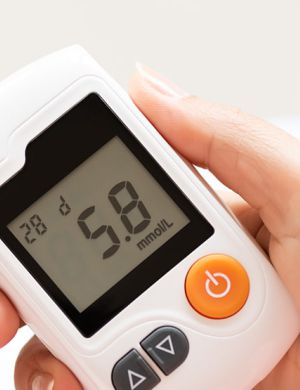
Medical Devices-USA/Europe Regulatory News – Nov 2023
USA
Guiding Principles on Predetermined Change Control Plans for Machine Learning-Enabled Medical Devices
FDA, Health Canada, and MHRA jointly identified 5 guiding principles (Focused and bounded, Risk-based, Evidence-based, Transparent, Total product lifecycle perspective) for predetermined change control plans. These principles draw upon the overarching GMLP guiding principles, in particular principle 10, which states that deployed models are monitored for performance and re-training risks are managed.
Advancements in digital health technologies include artificial intelligence/machine learning enabled Medical Devices (MLMD). Regulatory expectations that are aligned with best practices for development and change management, such as those described in the GMLP Guiding Principles, can help to support the quality of such devices. Ultimately, this can lead to patient benefits such as earlier access to innovative technologies or more accurate diagnoses.
Guidance on Enforcement Policy for Non-Invasive Remote Monitoring Devices Used to Support Patient Monitoring
The enforcement policy described in this guidance applies to modified devices where the original device was a legally marketed, non-invasive remote monitoring device listed in the document. the listed devices are required to submit a premarket notification under section 510(k) of the FD&C Act to FDA and receive FDA clearance prior to marketing these devices in the United States, to the extent the devices are not 510(k) exempt, as well as comply with post-marketing requirements. This policy supports this strategic priority and is intended to lessen the burden on both manufacturers and FDA by reducing the number of 510(k) submissions caused by certain modifications to allow for remote monitoring.
Guidance on Submission of Premarket Notifications for Magnetic Resonance Diagnostic Devices
This guidance document provides a detailed description of the information that should be included in a premarket notification for a magnetic resonance diagnostic device (MRDD). This document is intended to be used in conjunction with information regarding the content and format of a 510(k) premarket notification.
The guidance reflects an update to harmonize with the 4th edition of the FDA recognized standard IEC 60601-2-33 Medical electrical equipment – Part 2-33: Particular requirements for the basic safety and essential performance of magnetic resonance equipment for medical diagnosis.
Guidance on Testing and Labeling Medical Devices for Safety in the Magnetic Resonance (MR) Environment
Food and Drug Administration’s (FDA’s or the Agency’s) recommendations on testing to assess the safety and compatibility of Medical Devices in the Magnetic Resonance (MR) Environment and the recommended format for Magnetic Resonance Imaging (MRI) Safety Information in Medical Device labeling.
This guidance document applies to all Medical Devices that might be used in the MR environment. This includes all implanted Medical Devices, Medical Devices that are fastened to or carried by a patient (e.g., external insulin pump, pulse oximeter),
Medical Devices that would reasonably be anticipated to enter the MR environment during clinical care, and all Medical Devices that are intended to enter the MR environment.
The recommendations in this guidance for MR labeling of devices are consistent with ASTM F2503 Standard Practice for Marking Medical Devices and Other Items for Safety in the Magnetic Resonance Environment.
Guidance on Electronic Submission Template for Medical Device 510(k) Submissions
The Food and Drug Administration (FDA or Agency) is issued the guidance document to introduce submitters of premarket notification (510(k)) submissions to the Center for Devices and Radiological Health (CDRH) and Center for Biologics Evaluation and Research (CBER) to the current resources and associated content developed and made publicly available to support 510(k) electronic submissions to FDA.
FDA’s guidance document “Providing Regulatory Submissions for Medical Devices in Electronic Format — Submissions Under Section 745A(b) of the Federal Food, Drug, and Cosmetic Act provides a process for the development of templates to facilitate the preparation, submission, and review of regulatory submissions for Medical Devices solely in electronic format.
This guidance describes the technical standards associated with preparation of the electronic submission template for 510(k)s that enable submission of the 510(k) electronic submission solely in electronic format. The electronic submission template includes the information and guided prompts FDA believes will best facilitate the collection and assembly of the necessary elements of a ‘complete’ submission, as required by regulation or essential to FDA’s substantive review of the 510(k) submission.
CANADA
Guiding principles on Predetermined change control plans for machine learning-enabled Medical Devices
Predetermined change control plans for machine learning-enabled Medical Devices document, FDA, Health Canada and MHRA jointly identified 5 guiding principles (Focused and bounded, Risk-based, Evidence-based, Transparent, Total product lifecycle perspective) for predetermined change control plans. These principles draw upon the overarching good machine learning practice (GMLP) guiding principles.
Advancements in digital health technologies include artificial intelligence/machine learning-enabled Medical Devices (MLMDs). Regulatory expectations that are aligned with best practices for development and change management, such as those described in the GMLP guiding principles, can help to support the quality of such devices. Ultimately, this can lead to patient benefits such as earlier access to innovative technologies or more accurate diagnoses.
The change management process helps to ensure the ongoing safety and effectiveness of devices in the face of change throughout the device’s total product lifecycle (TPLC). However, certain changes to MLMDs, such as changes to a model or algorithm, may be substantive or significant. For this reason, they can require regulatory oversight, such as additional premarket review. Such regulatory expectations may not always coincide with the rapid pace of MLMD development.
EUROPE
Commission Delegated Regulation (EU) 2023/2197 as regards the assignment of Unique Device Identifiers for contact lenses
Standard contact lenses
A UDI-DI shall be assigned to standard contact lenses that have the same combination of contact lens design parameters, including at least base curve and diameter (“Master UDI-DI”).
Made to order contact lenses
A UDI-DI shall be assigned to made to order contact lenses that have the same combination of contact lens design parameters, including at least base curve and diameter (“Master UDI-DI”).
In addition to the requirement laid down in Section 3.9, a new Master UDI-DI shall be required whenever there is a change in the combination of the design parameters referred to in the first paragraph.
MDCG 2023-4 – Medical Device Software (MDSW) – Hardware combinations Guidance on MDSW intended to work in combination with hardware or hardware components
Through the provision of information and/or signals, these hardware or hardware components play an essential role in contributing to the medical purpose of certain MDSW. It is important to consider how the manufacturer of the MDSW has to demonstrate conformity with the applicable regulatory requirements for the combination of the MDSW and the concerned hardware or hardware components.
This guidance intends to examine and provide clarifications on which specific regulatory considerations apply when the hardware or hardware component incorporating the data collection element (camera, electrical/optical sensors etc.) are a Medical Device or an accessory to a Medical Device.
Manual on borderline and classification for Medical Devices under Regulation (EU) 2017/745 on Medical Devices and Regulation (EU) 2017/746 on In-vitro Diagnostic Medical Devices
The Medical Device Coordination Group (MDCG) has added more products to its manual on the classification of borderline technologies.
National authorities are responsible for determining if a product is a Medical Device in their markets. Yet, the European Union is concerned that differing interpretations will pose risks to public health and distort the internal market, leading MDCG to work with member states to reach agreements on the classification of products.
In its recent update, MDCG added agreed classifications for root canal irrigation solution, temperature sensors embedded in orthopedic devices for compliance tracking, systems intended to produce sclerosing foam, n-butyl-2-cyanoacrylate based adhesives and custom-made cranial implants.
BELGIUM
Federal Agency for medicines and health products (FAMHP) has released a notice on Deadlines for the submission of dossiers during the end-of-year period
During the end-of-year period, the FAMHP will be closed from Monday 25 December 2023 to Monday 1 January 2024. Deadlines have been set for the submission of different types of dossiers.
1. Dossiers for the Research and Development Division (human use)
A clock stop will be applied from 23 December 2023 to 7 January 2024: a 16-day delay will be added for all procedures. All dossiers submitted during this clock stop will be processed from 8 January 2024 onwards.
- Medical Device (MedDev)/Clinical Investigation (CI) dossiers
2. Dossiers for other divisions at the FAMHP
Tuesday 12 December 2023 is the deadline to submit dossiers to the following divisions. The validation procedure for dossiers submitted after 12 December 2023 will start on 2 January 2024.
- The Marketing Authorization Division (Human use);
- The Marketing Authorization Division (Variations and renewals).
FINLAND
Fimea named a new notified body in Finland in accordance with the IVD regulation
Fimea has named Sertio Oy from Tampere as a notified facility in accordance with the regulation on Medical Devices intended for in vitro diagnostics (2017/746, IVD regulation). This was already the second Finnish designation according to the IVD regulation. To date, twelve notified institutions in accordance with the IVD Regulation have been named throughout the EU, of which two are now in Finland. The nomination was published on the European Commission’s website in the Nando database on October 31, 2023. This can be considered a significant issue for the Finnish and European diagnostics industry.
Notified institutions are independent external assessment institutions that carry out conformity assessments in accordance with the regulation. In order to act as a notified body according to the regulation, the designation must be applied for from the national authority.
The notification of dangerous situations of Medical Devices is changing
Fimea’s new order 1/2023 regarding the notification of a Medical Device by a professional user will enter into force on November 1, 2023. It provides regulations on the method of reporting dangerous situations and the information to be reported.
At the same time, an instruction on the handling of a Medical Device that has been in a dangerous situation comes into force. In the future, the professional user must assess on a risk basis whether the Medical Device that was in a dangerous situation can be safely continued to be used or whether it should be taken out of use. However, the device that was involved in the dangerous situation or the data stored in the device must be available to the manufacturer of the device in order to find out the cause of the dangerous situation.
GERMANY
The fast-track process for Digital Health Applications (DiGA) version 3.4
The prerequisite for this is that the DiGA have successfully completed a test procedure at the Federal Institute for Drugs and Medical Devices (BfArM) and are listed in the directory of reimbursable digital health applications (DiGA directory, hereinafter also just the directory).
The procedure is designed as a rapid “fast track”: the evaluation time for the BfArM is three months after receipt of the complete application. The core of the process is the examination of the manufacturer’s information on the required product properties from data protection to user-friendliness – as well as the examination of proof to be provided by the manufacturer of the positive supply effects that can be achieved with the DiGA.
The procedure for Digital Care Applications (DiPA) version 1.2
The prerequisite for eligibility for reimbursement by the care insurance funds is, among other things, that the DiPA has successfully completed an examination procedure at the BfArM and is included in the directory of reimbursable digital care applications (DiPA directory, hereinafter also referred to as the directory) in accordance with Section 78a Paragraph 3 Eleventh Book of the Social Code (SGB XI) is included. The procedure for DiPA is designed as a quick application process: The evaluation time for the BfArM is generally three months after receipt of the complete application documents and can be extended by the BfArM by up to three additional months in justified individual cases.
The guide provides a summary of the regulations that can be found in various places in SGB XI and in the DiPAV and their appendices. In the guide, the BfArM also explains how it will regularly interpret the normative requirements from DVPMG, SGB XI and DiPAV, among others. It thus creates transparency about the specific requirements that need to be met in the process and ensures that all applications are processed and decided according to the same standards.
SWITZERLAND
FAQ on In-vitro Diagnostic Medical Device notifications
Guidance sheet for FAQ on In-vitro Diagnostic Medical Device notifications, according to IVDR that are placed on the market in Switzerland for the first time by manufacturers must, according to Art. 90 para. 1 IvDO in conjunction with Art. 6 oMedDO3, be notified to Swissmedic.
The notification obligation applies only to manufacturers based in Switzerland. Swiss authorised representatives are not subject to the notification obligation according to Art. 90 IvDO.
LATVIA
New rules for In-vitro Diagnostic Medical Devices come into force
The State Medicines Agency informs that this year On October 13, the regulations of the Cabinet of Ministers of October 10, 2023 No. 582 “Regulations for In-vitro* Diagnostic Medical Devices”
The new regulations on In-vitro Diagnostic Medical Devices have been adopted to implement the obligations arising from the norms of Regulation (EU) 2017/746 of the European Parliament and of the Council on In-vitro Diagnostic Medical Devices (hereinafter – Regulation 2017/746).
UNITED KINGDOM
MHRA to launch the AI-Airlock, a new regulatory sandbox for AI developers
The AI-Airlock will assist in the development and deployment of software and AI Medical Devices, safely providing patients with earlier access to cutting edge innovations that improve care.
It follows a robust process, so manufacturers of software and AI Medical Devices understand and deliver what is required to ensure the real-world viability of these devices. The process, following the ‘regulatory sandbox’ model is a world-leading mechanism to assist in safe development and deployment of software and AI Medical Devices.
This initiative demonstrates the MHRA’s commitment to building on its existing capabilities and investing its regulatory expertise to enable highly innovative areas of medical product development, bringing cutting-edge products to UK patients faster, without compromising on its robust standards of safety and performance.
MHRA and international partners publish five guiding principles for machine learning-enabled Medical Devices
The Medicines and Healthcare Products Regulatory Agency (MHRA), US Food and Drug Administration (FDA) and Health Canada have collaborated to identify five guiding principles for the development of predetermined change control plans (PCCPs). These guiding principles for PCCPs aim to remove the regulatory burden for developers of machine-learning-enabled Medical Devices (MLMDs), enabling reallocation of resources to improve product performance for patients.
The MHRA, FDA and Health Canada have today published five guiding principles for the development of PCCPs for MLMD manufacturers. These guiding principles aim to support manufacturers of MLMDs by reducing the regulatory burden of reassessment following certain changes and updates to their devices.
IRELAND
Guide to Fees for Human Products
The guidance explains about Medical Devices at the 9th point in the Guide to Fees for Human Products.
It includes:
Don’t miss out! Click here to stay in touch.
Categories
- Biopharma (47)
- Consumer Health (15)
- Cosmetics (8)
- Diagnostics (5)
- Digital Health (8)
- Food (2)
- Medical Device (100)
- OTC (3)
- Regulatory Intelligence (5)
- Standards (41)
Recent Blogs
Get the latest updates from Vistaar

Related Posts
CONNECT WITH US

Let's talk about how DDi can help you







